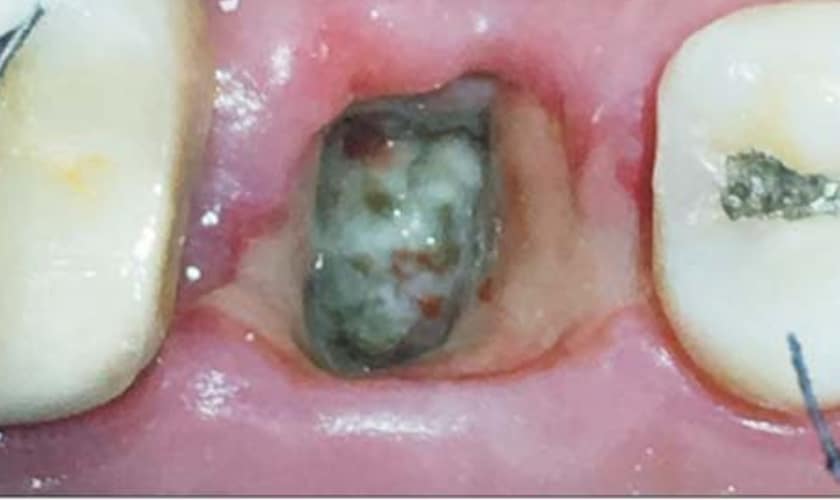
Welcome to our blog post on dry socket! If you’ve recently had a tooth extracted, you may have heard of this dreaded complication. Dry sockets can cause discomfort and hinder the healing process, so it’s important to understand their symptoms, causes, and treatment options. In this article, we’ll explore all aspects of dry socket and provide valuable insights to help you navigate through this common dental issue. So let’s dive in and learn more about how to prevent or manage dry sockets effectively!
What is Dry Socket?
What is a dry socket, you might ask? Well, after a tooth extraction, a blood clot forms in the socket to protect and promote healing. However, in some cases, this blood clot can become dislodged or dissolve prematurely. When this happens, it exposes the underlying nerves and bones in the socket, leading to what is known as a dry socket.
The name itself doesn’t sound pleasant, and neither do its symptoms. Dry sockets often cause severe pain that radiates from the extraction site to your ear or neck. You may also experience bad breath or an unpleasant taste in your mouth due to a bacterial infection in the exposed area.
Dry socket typically occurs within a few days after tooth extraction when proper care hasn’t been taken during the recovery process. It’s more common with impacted wisdom tooth extractions or if you have a history of dry sockets.
So how can you prevent this painful condition? Proper post-extraction care is crucial! Follow your dentist’s instructions diligently: avoid smoking or using straws that create suction in your mouth; maintain good oral hygiene by gently rinsing with warm saltwater; and stick to soft foods for a few days while avoiding any strenuous activities that could disturb the healing process.
Remember, prevention is key when it comes to dry sockets! Stay tuned as we explore its causes and treatment options next!
Symptoms of Dry Socket
Experiencing tooth extraction can be a challenging and discomforting process. While most individuals recover smoothly after the procedure, there is a potential complication known as a dry socket that may arise. Dry socket, also called alveolar osteitis, occurs when the blood clot at the site of extraction dissolves or becomes dislodged too early.
One common symptom of dry socket is severe pain in and around the extraction site. This pain often intensifies within a few days after the extraction and may radiate to nearby areas like the ear or jaw. Additionally, you may notice an unpleasant taste or odor coming from your mouth due to bacteria entering the empty socket.
Another telltale sign of a dry socket is visible bone in the empty tooth socket. This occurs when the blood clot fails to form properly or gets dislodged prematurely. You might also observe delayed healing compared to other individuals who have had similar extractions.
If you experience any of these symptoms following a tooth extraction, it’s crucial to contact your dentist in Beaverton immediately for a proper evaluation and treatment options tailored to your needs. Timely intervention can help alleviate pain and promote faster healing, ensuring your recovery proceeds smoothly
Causes of Dry Socket
After tooth extraction, a painful condition called dry socket, also called alveolar osteitis, may develop. While the exact cause of dry socket isn’t fully understood, there are several factors that may contribute to its development.
One possible cause of dry sockets is poor blood clot formation at the site where the tooth was removed. A blood clot forms in the empty socket following an extraction to shield the surrounding bone and nerves. If this blood clot becomes dislodged or dissolves too quickly, it can expose the underlying tissues and nerves to air and food particles, leading to a dry socket.
Other potential causes include smoking or using tobacco products shortly after extraction. The chemicals in tobacco can delay healing and increase your risk of developing a dry socket. Additionally, certain oral contraceptives and hormonal imbalances may also increase your chances of experiencing this painful condition.
Furthermore, trauma or infection at the surgical site can disrupt proper healing and lead to dry sockets. It’s essential to follow post-operative care instructions provided by your dentist to minimize these risks.
Treatment Options
When it comes to treating dry sockets, there are several options available that can help alleviate the pain and promote healing. Your dentist in Beaverton will assess your condition and recommend the best treatment plan for you.
One common treatment option is medication. Your dentist may prescribe painkillers or anti-inflammatory drugs to help manage the discomfort associated with a dry socket. These medications can provide temporary relief while promoting healing in the affected area.
In addition to medication, your dentist may also suggest using a medicated dressing or a special paste. These topical treatments contain ingredients that can soothe the exposed bone and encourage new tissue growth.
Another treatment option is irrigation. This involves flushing out the socket with a gentle stream of saline solution or an antiseptic rinse. Irrigation helps remove any debris or bacteria from the socket, reducing the risk of infection and facilitating faster healing.
Your dentist may also recommend making some lifestyle changes during your recovery period. This could include avoiding smoking, as it can delay healing and increase the risk of complications.
It’s important to follow your dentist’s instructions closely and attend all follow-up appointments for proper monitoring of your progress. With appropriate treatment options, most cases of dry socket resolve within a week or two.
Remember, every case is unique, so it’s essential to consult with your dentist in Beaverton for personalized advice on how to treat dry sockets effectively.
Recovery and Healing Process
After experiencing the discomfort of a dry socket, you’ll be relieved to know that there is a recovery and healing process ahead. While it may take some time for your mouth to fully heal, following these steps can help speed up the process.
It’s critical that you practice proper dental hygiene during this period. Gently brush your teeth twice a day with a soft-bristled toothbrush, being careful not to touch the affected area directly. Rinse your mouth with saltwater or an antiseptic mouthwash after meals to keep the socket clean.
Avoid smoking and using straws while you’re recovering from a dry socket. These activities can increase suction in your mouth and disrupt the formation of blood clots necessary for healing.
In addition, stick to softer foods such as mashed potatoes, yogurt, soup, and smoothies in order to minimize any irritation or trauma to the healing socket. Avoid crunchy or hard foods that could potentially dislodge blood clots.
Furthermore, follow any additional instructions provided by your dentist in Beaverton regarding pain management medication or antibiotics if prescribed. This will help alleviate any discomfort during the recovery period.
Be patient with yourself as you go through this healing process. It may take several weeks for complete healing, depending on how severe your dry socket was initially.
Remember that everyone’s experience is different when it comes to recovering from a dry socket. If you have any concerns or questions along the way, don’t hesitate to reach out to a dental professional in Beaverton who will guide you through every step of the journey back towards optimal oral health!
